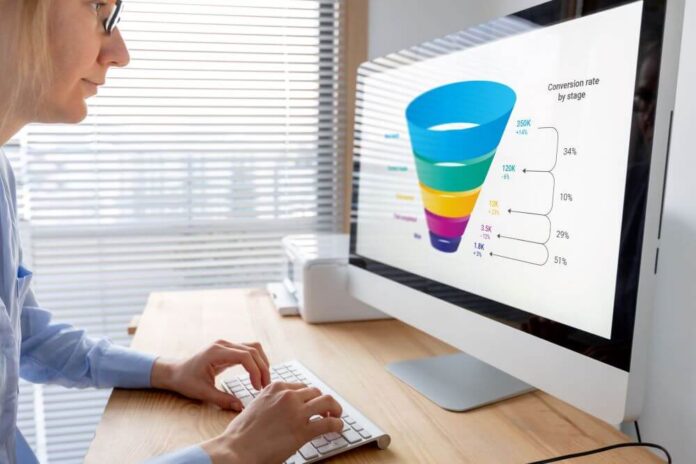As a small or medium-sized business (SMB), you constantly juggle multiple tasks to keep your operations running smoothly. While product development, customer service, and finances demand attention, one area you can’t overlook is your marketing funnel. This tool guides potential customers through the buying journey, and optimizing it can boost your sales and increase customer retention.
In this guide, we’ll break it down into simple, actionable steps so you can attract more leads, nurture them, and boost conversion rates. Read on for the details!
Understand Your Audience
Successful marketing starts with understanding who you’re trying to reach. Without this foundation, even the most optimized funnel won’t deliver results.
To do this, start by developing detailed buyer personas. Gather data on your ideal customers, including their demographics, job roles, pain points, and goals. This research helps craft messaging that truly resonates at every funnel stage.
Next, map out the customer journey. Identify key touchpoints where prospects interact with your brand. Every piece of content, email campaign, and call to action should address specific concerns at each stage of the journey. This approach ensures your marketing efforts attract the right leads and guide them smoothly toward becoming loyal customers.
Consider partnering with a digital marketing agency to create an effective marketing funnel. Luckily, you can easily spot them using online resources. For instance, you can find the best marketing partners in London through Sortlist. These experts can provide valuable insights into the latest marketing trends, offer proven techniques, and assist with advanced tools to enhance your funnel’s performance.
Optimize Each Stage of the Funnel
Each funnel stage requires different marketing efforts to move leads closer to the final purchase. Here’s a breakdown of the optimization process by stage:
Awareness Stage
At this top level of the funnel, your goal is to attract as many people as possible. Content marketing is particularly effective here, as it helps introduce your brand to a broader customer base.
Content marketing works exceptionally well for building awareness. Create valuable blog posts, social media content, podcasts, and videos that address common challenges your audience faces.
You should also optimize your content for search engines to maximize visibility. Research relevant keywords and include them naturally in your headline, meta descriptions, and content.
Social media platforms offer another powerful way to reach potential customers. Focus on the channels where your audience spends time, whether it’s Facebook, LinkedIn, or Instagram.
Interest Stage
Now that potential customers know your brand exists, it’s time to deepen their interest. This stage focuses on building meaningful connections that move people closer to a purchase decision.
Start by offering valuable lead magnets. Free resources like ebooks, templates, or exclusive guides work well to capture contact information. These tools grow your email list and establish your expertise.
With contact details secured, email marketing campaigns become your most powerful tool. Send regular, value-packed emails that educate subscribers about your offerings. Mix educational content with occasional promotions to maintain interest without being pushy.
Consideration Stage
In the consideration phase, prospects are evaluating your product against others. This is your opportunity to stand out and convince them why you’re the best choice.
Case studies and customer testimonials play a significant role here. Real-life examples of satisfied customers help build trust and demonstrate the value of your product. Reviews, success stories, and testimonials all act as social proof, reinforcing that your product works as promised.
Offering product demos or free trials can also make a big difference. When potential customers can experience your product firsthand, it removes doubts and builds confidence in its value.
Decision Stage
This is where browsing turns into buying. After nurturing your leads, they’re on the verge of becoming customers. Your focus should be on removing any remaining obstacles that could prevent a purchase.
At this stage, visitors need clear directions. Use prominent, action-driven buttons that guide them without confusion. Phrases like “Get Instant Access” or “Claim Your Discount” create a sense of urgency while pointing them toward the next step.
To push them over the edge, use strategic incentives. Time-sensitive bonuses or limited-quantity offers tap into psychological triggers, helping convert hesitant shoppers into committed buyers.
Retention Stage
The first purchase is only the start of the customer journey. Post-purchase communication should prioritize helpfulness over promotion. A simple “Thank You” email with valuable tips for using their new product creates goodwill.
Recognizing and rewarding loyalty is key. Offer exclusive discounts, birthday surprises, or early access to new products. These gestures make customers feel valued and encourage them to return for future purchases.
Finally, turn customer satisfaction into advocacy. Happy customers will likely refer others, especially when it’s easy and rewarding. A well-structured referral program provides genuine benefits to both parties and often yields better results than traditional advertising, all while keeping costs low.
Measure and Iterate
Optimizing your sales funnel requires constant monitoring and refinement. Analytics tools help measure performance at every stage, revealing what’s working and what needs adjustment. To gauge success, focus on key metrics like conversion rates, customer acquisition cost (CAC), and return on investment (ROI).
A/B testing provides valuable insights for improvement. Experiment with different versions of landing pages, email subject lines, and calls to action to identify which variations drive better results. Minor tweaks can lead to significant gains in conversions.
Since customer behavior and market conditions change over time, regular reviews keep your funnel effective. Consistent testing and iteration ensure your marketing strategies align with your audience’s needs.
Conclusion
Optimizing your marketing funnel is a continuous journey that requires careful planning, execution, and adaptation. As an SMB, understanding your audience and aligning each stage of the funnel with their needs can lead to improved conversions and stronger customer loyalty. Remember, the work doesn’t stop after the sale. Focusing on retention and consistently measuring performance ensures your marketing funnel remains effective.



